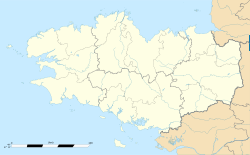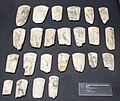You can help expand this article with text translated from the corresponding article in French. (October 2012)Click [show] for important translation instructions.
|
| Saint-Michel tumulus | |
|---|---|
 | |
| General information | |
| Location | Carnac, Brittany, France |
| Coordinates | 47°35′16″N3°04′25″W / 47.5879°N 3.0735°W |
| Year(s) built | c. 4500 BC |
| Height | 10 meters |
| Dimensions | |
| Diameter | 125 meters |
| Technical details | |
| Material | Stone |
The Saint-Michel tumulus (Breton : tumulus Sant-Mikael) is a megalithic grave mound, located east of Carnac in Brittany, France. [1] It is the largest grave mound in continental Europe.












